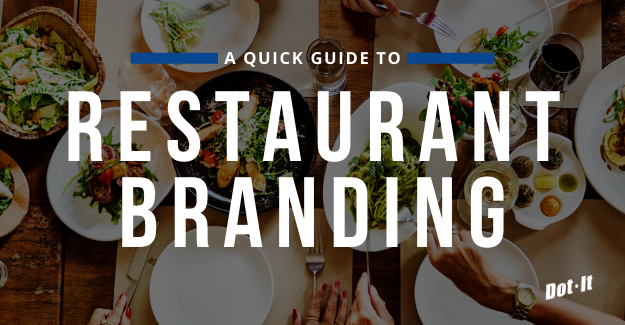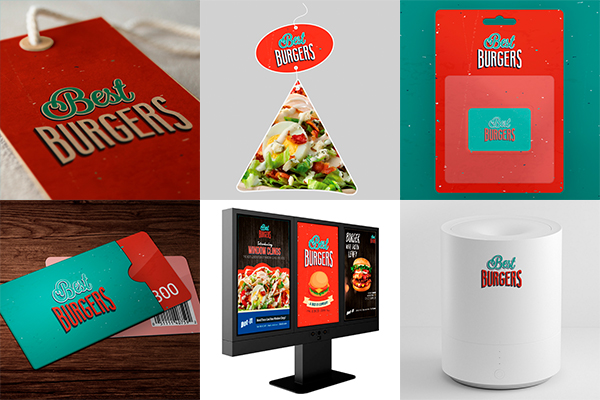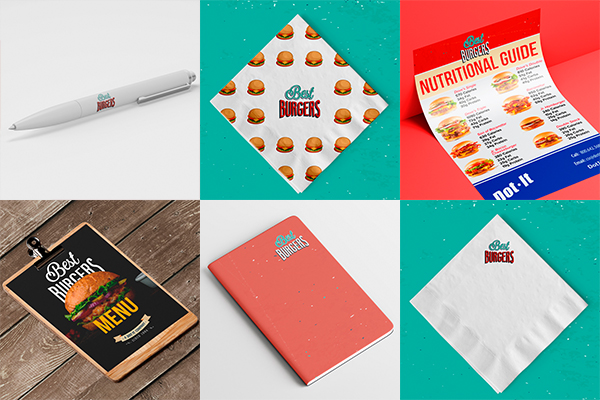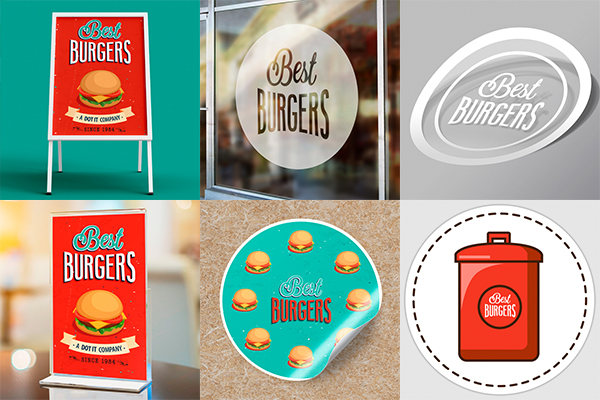A Quick Guide to Restaurant Branding: What You Need to Know

One of the most important aspects of restaurant management that can’t be overlooked is restaurant branding. Now more than ever, your restaurant’s success is tied to how well you brand your restaurant.
Whether you are in the process of opening a new restaurant or an established owner of a chain, our quick guide to restaurant branding will help make your marketing efforts stand out from the crowd.
The Importance of Restaurant Branding
The goal of good restaurant branding is to communicate your restaurant’s identity and overall concept to your customers. Your brand tells your customers what to expect when they walk into the door. It’s a promise of a specific experience that they can anticipate no matter which location they are frequenting.
Your branding also distinguishes you from other restaurants in the market. If you have a high-quality brand, customers may forgo other eateries and come straight to your doors.

It doesn’t matter if you are opening a new restaurant or maintaining an established one – your brand is important. A strong, clear, trustworthy brand identify will help customers understand who you are and what they can expect from you. It will also make diners feel welcome and comfortable eating at your establishment.
Restaurant Branding Step 1: Brainstorming Your Brand
A lot of things go into branding a restaurant. However, they all have one thing in common: enabling the communication of a specific message to your customers. You want to consider a few questions when creating your brand:
- How do you want to be perceived by customers?
- What kind of experience do you want to provide?
- What are your core values?
Your messaging should revolve around the answers to these questions. This messaging will then be portrayed by all your locations, effectively creating a uniform brand. Without consistency in look and design from store to store, customers will struggle to form a connection to your restaurant brand.
During the brainstorming step, you will also want to start thinking of colors, fonts, and logos to represent your brand. The aesthetics of your brand are one of its strongest components. All elements of your brand should tie together to create a cohesive product.
Restaurant Branding Step 2: Creating Your Brand
Your branding generally revolves heavily around your logo. However, that is far from the only important part of your brand. Things like colors, font styles, images, interior and exterior décor, menus, staff uniforms, advertisements, and even the music playing in your stores play a part in your overall brand. These all create the tone of your brand, and ultimately an image in the minds of your customers. Select each with care, and don’t be afraid to look at all your options. Creating the optimal personality for your restaurants is one of the first steps to creating your brand.
After you have the look and feel of your brand, you want to decide on your values. This is where writing a mission statement and a company vision comes into place. Think of everything you want your company to stand for and write it down. Then you’ll have a starting point for your overall restaurant values.
Questions to consider when determining your restaurant’s core values:
- Am I going to work exclusively with local products?
- Is my restaurant upscale catering to a fine dining experience?
- Are we a casual establishment focusing on the lunch crowd?
- What values of my own do I want my restaurant to represent?
Answering these questions will help you create your brand identity as much as creating your logo and other marketing materials. Creating strong core values help you develop trust with your customers. Good values can also inspire a strong sense of customer loyalty in the future.
Once you’ve decided on your restaurant’s tone and personality and your values, you want to craft brand guidelines. These guidelines will instruct managers and franchisees on the acceptable way to implement and use your brand. The brand guidelines should show these members of your team how to use your colors, fonts, logos, and other marketing materials. It should also make not of your company values and mission and the applicable usage scenarios. Once it is created, employees can use it as a reference whenever representing your brand.
Restaurant Branding Step 3: Implementing Your Brand
Now that you have the look and feel of your brand, you want to implement it. First, accomplish this by relating to your customer sets. You want your brand to reach and impact the communities surrounding your stores. To do this, get to know important customer psychographics and demographics. For instance, if you have a lot of schools around your store, you may want to reach out about hosting a fundraiser night for them. Connecting with the community is an often-forgotten brand tool that leaves a strong impact.
Customer Information to Know:
- Average age in the community
- Gender balance
- Income levels
- Common hobbies
- Schools, churches, and recreational centers nearby
Understanding this information of each restaurant’s location will help you decide the best way to market your restaurant within the community.
After you have created your brand and considered your customers, you will want to implement your brand in your stores. What does this look like? Ordering on-brand materials such as menu displays, window clings, napkins, signage, posters, table tents, gift cards, take-out menus, a website, and a host of other items. This includes dictating what your employees should wear – oftentimes a branded shirt or apron can elevate your brand awareness inside the store. Customers will see these when they come into your restaurant – and when they take to-go cups and orders home – so you want them to recognize the item as branded. Like your overall brand, you want these items to have a consistent look and feel. They should sport your logo, colors, slogans, and fonts.
When ordering print items, you want to take care that your fulfillment company matches your colors, fonts, and logos. This will enable the consistency vital to a strong brand. You also want to ensure your franchisees are sticking to your brand standards by distributing your brand guidelines and following up with individual stores.
Restaurant Branding Step 4: Marketing Your Brand
Once your brand is created and tailored to your local branches – and you have ordered properly branded items for each store – it’s time for the big step: marketing. Marketing your restaurant is more than just putting up “Now Open” signs in the right fonts and colors. Marketing is about putting your brand it in front of the public purposefully with a strategic marketing plan.
The good new is that your new strong brand is made to fully support all your marketing efforts. A consistent brand leads to consistent marketing across all branches. This consistency will help you put a solid marketing plan together for multiple locations.
Local Store Marketing
There are several aspects of restaurant marketing to address when it comes to branding. First, we have local store marketing. This is the marketing efforts that bring in foot traffic to individual stores. For this, create materials to distribute to nearby customers through a direct mail campaign. These print items can include menus, bounceback cards or coupons, and announcement flyer for your specials. Just remember: your brand should support all marketing efforts, so each item should meet your brand standards.Branded merchandise for your customers can also help your local store marketing efforts. Distributing branded shirts and cups to diners will spread the word about your restaurant with little effort from yourself. Just remember – you want these items to meet all brand standards we defined in step 2 as well.
Digital Marketing
Digital marketing is also important to your brand initiative. Your online presence is vital in today’s technology-based society; a poorly performing (or nonexistent!) website can harm your traffic and lose sales. Creating a properly branded website, and sharing this website with your customers, will help your brand strategy immensely. Also take the time to build a robust and healthy email list to stay top-of-mind with your customers. Collecting emails can be done to track loyalty points and encourage revisits.
Another aspect of the digital craze is social media. Connecting with customers via social media will expand your brand’s reach outside of local store marketing. It is also a great opportunity to raise awareness of new store openings. When considering your brand marketing strategy, use social media to your advantage. Just ensure that all the graphics and posts coincide with both your brand guidelines and your company values.
Digital marketing channels are great for engaging with customers outside of the dining experience. A properly branded online presence is an invaluable asset to your operations. However, remember that your marketing efforts will likely change over time. Remain nimble and adapt to the market’s trends to stay relevant in the eyes of the consumer.
The same is true of your brand in general. Trends change and standards shift, so take the time every so often to reevaluate your brand standards. Keeping your brand current will help your future efforts.
Dot It Restaurant Fulfillment company offers a robust Brand Fulfillment solution to keep your brand up-to-date and consistent. For more information, contact us today


